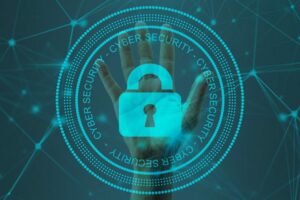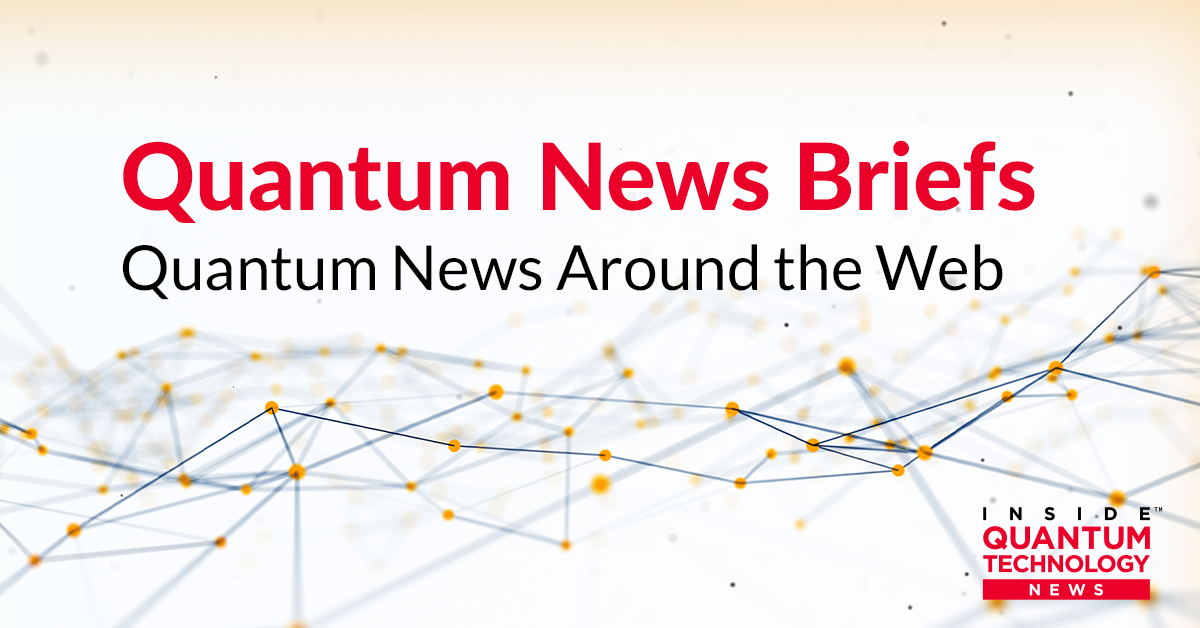
Quantum News Briefs August 28:
DARPA investing $2.4M into Virginia Tech program using quantum concept to achieve thermal imaging at room temperature
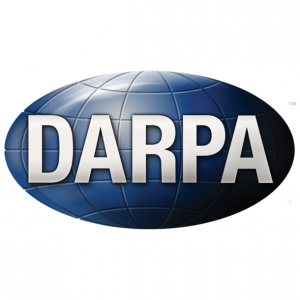 The Defense Advanced Research Projects Agency (DARPA) is investing up to $2.4 million over the next five years into a project from Virginia Tech Center for Quantum Information Science and Engineering. Researchers are using principles of quantum mechanics to achieve ultrasensitive thermal imaging at room temperature and push the fundamental limits of what infrared detectors can sense. Quantum News Briefs summarizes the August 23 announcement.
The Defense Advanced Research Projects Agency (DARPA) is investing up to $2.4 million over the next five years into a project from Virginia Tech Center for Quantum Information Science and Engineering. Researchers are using principles of quantum mechanics to achieve ultrasensitive thermal imaging at room temperature and push the fundamental limits of what infrared detectors can sense. Quantum News Briefs summarizes the August 23 announcement.
Led by Linbo Shao, assistant professor in the Bradley Department of Electrical and Computer Engineering, the team’s new approach aims to sharpen the sensitivity of detectors looking at the mid- and long-wavelength infrared part of the spectrum. This band of radiation is key to night vision, monitoring body temperature, and spotting forest fires as well as tracking rockets, missiles, and airplanes. Enhancing the sensitivity of such detectors would open new opportunities for research and applications, including better ways to search for chemical signs of life on other planets, stealth navigation of vehicles in pitch black, and early disease detection through breath analysis.
Shao is collaborating with Yizheng Zhu, associate professor of electrical and computer engineering and member of the Virginia Tech quantum community, as well as Yu Yao from Arizona State University.
The team is relying on a quirky behavior exhibited by certain systems when they reach the so-called exceptional point, where a quantum property called parity-time symmetry breaks down and results in a dramatic increase of sensitivity.
Like a musician tuning to a certain pitch, the researchers will tweak and tune the vibrations within the resonating platform to the sweet spot where the mathematical values associated with the vibrations collapse on each other. At this exceptional point, a miniscule vibration from an infrared input will trigger a much larger signal that is far easier to detect.
“Using the exceptional point is really what sets this endeavor apart from anything that’s come before — it’s a brand new strategy for thermal detection,” said Shao. “It’s not an engineering improvement, it’s a transformative approach.” Click here to read the announcement in-entirety on Virginia Tech website.
Distinguished four-star General Funk joins Infleqtion, bringing expertise in deploying technology that strengthens national security
 Infleqtion announced on August 23 that General Funk, a distinguished retired four-star general of the United States Army, has joined Infleqtion as an advisor. General Funk’s unparalleled leadership experience and strategic expertise will contribute to accelerating the application of quantum technology in real-world scenarios. General Funk’s announcement follows the recent additions of Retired United States Air Force Major General Cameron Holt, Former Army Applications Lab Executive Director, as advisors.
Infleqtion announced on August 23 that General Funk, a distinguished retired four-star general of the United States Army, has joined Infleqtion as an advisor. General Funk’s unparalleled leadership experience and strategic expertise will contribute to accelerating the application of quantum technology in real-world scenarios. General Funk’s announcement follows the recent additions of Retired United States Air Force Major General Cameron Holt, Former Army Applications Lab Executive Director, as advisors.
With an impressive military career spanning more than 35 years, General Funk served as the commanding officer of the Army Training and Doctrine Command, the 60th Commanding General of III Corps and Fort Hood, Texas, and the Commanding General of the Combined Joint Task Force – Operation Inherent Resolve. He is renowned for his ability to scale and lead large organizations through times of uncertainty.
General Funk’s multifaceted expertise includes workforce development, risk management and mitigation, strategic and operational planning, talent management, budget execution, and strategic decision-making. He oversaw talent management for an 80,000-person organization dedicated to training and education within the 1.3 million-person U.S. Army. General Funk’s expertise will help accelerate Infleqtion’s mission to deliver technology that addresses current security concerns and shapes the future of national security.
General Funk will play a vital role in spearheading Infleqtion’s expansion efforts in Texas and fortifying the company’s strategic partnerships within the region, helping to identify significant opportunities for growth and collaboration. His addition to the Infleqtion team is pivotal as the company continues to expand its capabilities and offerings. His profound understanding of the strategic and tactical requirements across the military and multiple industries will provide valuable insights that bridge the gap between innovative technology and real-world applications. Click here to read the announcement on Infleqtion’s site.
New quantum computing paradigm for faster computation
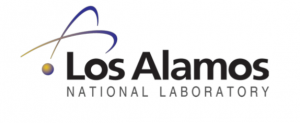 Los Alamos National Laboratory scientists have developed a groundbreaking quantum computing>quantum computing approach using natural quantum interactions. This method promises longer-lived qubits, efficient problem-solving with Grover’s algorithm, and significant error resilience. Quantum News Briefs summarizes the August 26 article in SciTechDaily.
Los Alamos National Laboratory scientists have developed a groundbreaking quantum computing>quantum computing approach using natural quantum interactions. This method promises longer-lived qubits, efficient problem-solving with Grover’s algorithm, and significant error resilience. Quantum News Briefs summarizes the August 26 article in SciTechDaily.
“Our finding eliminates many challenging requirements for quantum hardware,” said Nikolai Sinitsyn, a theoretical physicist at Los Alamos National Laboratory. He is coauthor of a paper on the approach, which was published on August 14 in the journal Physical Review A. “Natural systems, such as the electronic spins of defects in diamond, have precisely the type of interactions needed for our computation process.”
Sinitsyn said the team hopes to collaborate with experimental physicists also at Los Alamos to demonstrate their approach using ultracold atoms. Modern technologies in ultracold atoms are sufficiently advanced to demonstrate such computations with about 40 to 60 qubits, he said, which is enough to solve many problems not currently accessible by classical, or binary, computation. A
Instead of setting up a complex system of logic gates among a number of qubits that must all share quantum entanglement, the new strategy uses a simple magnetic field to rotate the qubits, such as the spins of electrons, in a natural system. The precise evolution of the spin states is all that is needed to implement the algorithm. Sinitsyn said the approach could be used to solve many practical problems proposed for quantum computers.
The Los Alamos team’s theoretical paper showed how the approach could solve a number-partitioning problem using Grover’s algorithm faster than existing quantum computers. As one of the best-known quantum algorithms, it allows unstructured searches of large data sets that gobble up conventional computing resources. For instance, Sinitsyn said, Grover’s algorithm can be used to divvy up the runtime for tasks equally between two computers, so they finish at the same time, along with other practical jobs. The algorithm is well-suited to idealized, error-corrected quantum computers, although it is difficult to implement on today’s error-prone machines. Click here to read the SciTechDaily article in-entirety.
NQCIS (National Quantum Communication Infrastructure in Sweden)
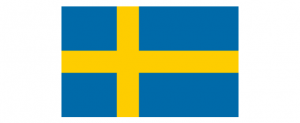 NQCIS falls under the umbrella of the EuroQCI initiative, where the Swedish consortium formed by industry (Ericsson AB, Quantum Scopes AB and quCertify AB) and academia (KTH, Chalmers, Linköping and Stockholm University) have been granted 100M SEK to test and deploy quantum key distribution systems tailored to the specific needs of Sweden. Quantum News Briefs summarizes an extensive August 15 article by Ericsson representatives.
NQCIS falls under the umbrella of the EuroQCI initiative, where the Swedish consortium formed by industry (Ericsson AB, Quantum Scopes AB and quCertify AB) and academia (KTH, Chalmers, Linköping and Stockholm University) have been granted 100M SEK to test and deploy quantum key distribution systems tailored to the specific needs of Sweden. Quantum News Briefs summarizes an extensive August 15 article by Ericsson representatives.
The project is part of a broader European Commission initiative within the Digital Europe Programme and is funded by the EU as well as Vinnova and the Wallenberg Centre for Quantum Technology (WACQT).
The project started January 2023 and to last for 2.5 years. As part of the EuroQCI (Europe Quantum Communication Infrastructure), the NQCIS will focus on some of these key aspects of the solution:
- Scalability: The infrastructure should be scalable to accommodate a growing number of users, nodes, and quantum devices. It should be capable of handling the increasing demand for secure communication in various sectors highlighted above.
- Interoperability: to ensure interoperability between different quantum communication platforms, enabling seamless communication across national and international networks. This allows users from different regions to communicate securely.
- Infrastructure Resilience: The project focuses on building a robust and resilient quantum communication infrastructure. It considers factors such as reliability, fault tolerance, and redundancy to maintain the continuity of communication services.
- Standards and Protocols: to develop common standards and protocols for quantum communication, ensuring compatibility and facilitating widespread adoption. Standardization is crucial for interoperability and the efficient operation of the infrastructure.
This includes validation of different implementations to identify the most effective solutions that meet Sweden’s needs for secure communications in metropolitan areas, long-distance networks and terrestrial to satellite links.
By joining this consortium, Ericsson unlocks a business innovation opportunity and lead the way for digital transformation. Click here to read article in-entirety.
Sandra K. Helsel, Ph.D. has been researching and reporting on frontier technologies since 1990. She has her Ph.D. from the University of Arizona.
- SEO Powered Content & PR Distribution. Get Amplified Today.
- PlatoData.Network Vertical Generative Ai. Empower Yourself. Access Here.
- PlatoAiStream. Web3 Intelligence. Knowledge Amplified. Access Here.
- PlatoESG. Automotive / EVs, Carbon, CleanTech, Energy, Environment, Solar, Waste Management. Access Here.
- PlatoHealth. Biotech and Clinical Trials Intelligence. Access Here.
- ChartPrime. Elevate your Trading Game with ChartPrime. Access Here.
- BlockOffsets. Modernizing Environmental Offset Ownership. Access Here.
- Source: https://www.insidequantumtechnology.com/news-archive/quantum-news-briefs-august-28darpa-investing-2-4m-in-virginia-tech-program-using-quantum-concept-to-achieve-thermal-imaging-at-room-temperature-distinguished-four-star-general-funk-joins-infl/
- :has
- :is
- :not
- :where
- $UP
- 1
- 1.3
- 14
- 15%
- 2023
- 23
- 26%
- 28
- 40
- 60
- 75
- 80
- a
- ability
- About
- above
- Academia
- accelerate
- accelerating
- accessible
- accommodate
- Achieve
- across
- addition
- additions
- addresses
- Adoption
- advanced
- advisor
- advisors
- aims
- AIR
- Air Force
- Airplanes
- algorithm
- algorithms
- All
- allows
- along
- also
- Although
- among
- an
- analysis
- and
- announced
- Announcement
- anything
- apart
- Application
- applications
- approach
- ARE
- areas
- arizona
- Army
- article
- AS
- aspects
- Assistant
- Associate
- associated
- At
- Aug
- AUGUST
- BAND
- BE
- been
- before
- behavior
- Better
- between
- Black
- body
- brand
- Brand New
- breaks
- Breath
- BRIDGE
- Bringing
- broader
- budget
- Building
- business
- by
- called
- CAN
- capabilities
- capable
- Career
- Center
- centre
- certain
- challenging
- chemical
- click
- collaborate
- collaborating
- collaboration
- Collapse
- combined
- come
- commission
- Common
- communicate
- Communication
- Communications
- community
- company
- Company’s
- compatibility
- complex
- computation
- computations
- computer
- Computer Engineering
- computers
- computing
- concept
- Concerns
- considers
- consortium
- continues
- continuity
- contribute
- conventional
- could
- crucial
- Current
- Currently
- darpa
- data
- data sets
- Decision Making
- dedicated
- Defense
- deliver
- Demand
- demonstrate
- Department
- deploy
- deploying
- detect
- Detection
- develop
- developed
- Development
- Devices
- Diamond
- different
- difficult
- digital
- Digital Transformation
- Director
- Disease
- Distinguished
- distribution
- down
- dramatic
- each
- Early
- easier
- EC
- Education
- Effective
- efficient
- efforts
- Electronic
- electrons
- eliminates
- enabling
- endeavor
- Engineering
- enhancing
- enough
- ensure
- ensuring
- entanglement
- equally
- Ericsson
- error
- EU
- Europa
- Europe
- European
- european commission
- evolution
- exceptional
- execution
- executive
- Executive Director
- existing
- Expand
- expansion
- experience
- experimental
- expertise
- facilitating
- factors
- Falls
- far
- faster
- field
- finding
- finish
- fires
- five
- Focus
- focuses
- follows
- For
- Force
- forest
- formed
- Former
- from
- Frontier
- fundamental
- funded
- future
- gap
- Gates
- General
- granted
- groundbreaking
- Growing
- Growth
- Handling
- Hardware
- Have
- he
- help
- helping
- her
- here
- High
- Highlighted
- his
- hood
- hopes
- How
- HTTPS
- identify
- iii
- image
- Imaging
- implement
- implementations
- impressive
- improvement
- in
- includes
- Including
- Increase
- increasing
- industries
- industry
- information
- Infrastructure
- inherent
- Initiative
- Innovation
- innovative
- innovative technology
- input
- inside
- Inside Quantum Technology
- insights
- instance
- interactions
- International
- Interoperability
- into
- investing
- IT
- ITS
- January
- Jobs
- joined
- joining
- Joins
- joint
- journal
- Key
- lab
- laboratory
- large
- larger
- Last
- lead
- Leadership
- Life
- limits
- links
- logic
- looking
- los
- Los Alamos National Laboratory
- Machines
- Magnetic field
- maintain
- major
- management
- many
- mathematical
- max-width
- mechanics
- Meet
- member
- method
- Military
- million
- missiles
- Mission
- mitigation
- Modern
- modern technologies
- monitoring
- more
- most
- much
- multifaceted
- multiple
- Musician
- must
- National
- national security
- Natural
- Navigation
- needed
- needs
- networks
- New
- news
- next
- night
- nodes
- number
- of
- Offerings
- Officer
- on
- ONE
- open
- operation
- operational
- opportunities
- Opportunity
- or
- organization
- organizations
- Other
- our
- over
- Paper
- paradigm
- part
- partnerships
- Pitch
- pivotal
- Planets
- planning
- platform
- Platforms
- plato
- Plato Data Intelligence
- PlatoData
- Play
- Point
- posted
- Practical
- precise
- precisely
- principles
- Problem
- problem-solving
- problems
- process
- Professor
- profound
- Program
- programme
- project
- projects
- promises
- property
- proposed
- protocols
- provide
- published
- Push
- Quantum
- quantum algorithms
- quantum computers
- quantum computing
- quantum entanglement
- quantum information
- Quantum Mechanics
- quantum technology
- qubits
- reach
- Read
- real world
- really
- recent
- region
- regions
- reliability
- relying
- Renowned
- Reporting
- Requirements
- research
- researchers
- resilience
- resilient
- resonating
- Resources
- Results
- review
- Risk
- risk management
- robust
- Role
- Room
- s
- Said
- same
- satellite
- scalable
- Scale
- scenarios
- Science
- scientists
- seamless
- Search
- Sectors
- secure
- securely
- security
- sense
- Sensitivity
- Services
- Sets
- setting
- shapes
- Share
- she
- should
- showed
- Signal
- significant
- Signs
- Simple
- since
- site
- So
- solution
- Solutions
- SOLVE
- some
- spanning
- spearheading
- specific
- Spectrum
- Spin
- spins
- Spot
- spotting
- standardization
- standards
- started
- State
- States
- Stealth
- Strategic
- Strategic Partnerships
- Strategy
- Strengthens
- such
- Sweden
- Swedish
- sweet
- system
- Systems
- tailored
- Talent
- Task
- task force
- tasks
- team
- tech
- Technologies
- Technology
- terrestrial
- test
- than
- that
- The
- The Future
- their
- theoretical
- thermal
- These
- they
- this
- Through
- time
- times
- to
- today’s
- tolerance
- Tracking
- Training
- Transformation
- transformative
- trigger
- true
- two
- type
- u.s.
- umbrella
- Uncertainty
- under
- understanding
- United
- United States
- university
- unlocks
- unparalleled
- used
- users
- uses
- using
- validation
- Valuable
- Values
- various
- Vehicles
- virginia
- vision
- vital
- was
- Way..
- ways
- Website
- WELL
- What
- when
- which
- widespread
- will
- with
- within
- Workforce
- Workforce Development
- would
- years
- zephyrnet













